Understanding Circle of Fifths for Music: Guitar & Piano Guide
Category: Music Theory
Unlock the Secrets of the Circle of Fifths for Music
If you're a beginner musician eager to grasp essential music theory concepts, you've likely heard about the circle of fifths but found it confusing or overwhelming. Whether you play guitar or piano, understanding this powerful tool can transform how you compose, improvise, and comprehend music. You might have landed here trying to decode that colorful wheel of keys and wondering how it applies practically to your instrument. Many beginners struggle to connect theory with real-world playing, leading to frustration and stalled progress.
This post breaks down the circle of fifths in a clear, step-by-step way, designed specifically for guitar and piano players starting their journey. We strip away jargon and focus on actionable insights you can immediately apply to your practice. From key signatures to chord progressions and scales, you’ll learn how this foundational concept helps you navigate music effortlessly. By the end, the circle of fifths will no longer be a mystery but a trusted companion elevating your musical skills.
Keep reading if you want straightforward explanations, practical tutorials, and the confidence to use the circle of fifths to unlock new creative possibilities on your guitar or piano.
- Unlock the Secrets of the Circle of Fifths for Music
- What is the Circle of Fifths? – Definition and Visual Overview
- How the Circle Represents Key Signatures
- Understanding Fifths and Fourths – The Interval Relationship and Why the Circle Moves in Fifths
- Using the Circle for Guitar: Fingerboard Patterns and Chord Shapes
- Using the Circle for Piano: Scales and Chord Building
- Related Minor Keys and the Concept of Relative Minors
- Common Chord Progressions Derived from the Circle of Fifths
- Modulation and Key Changes Made Simple – How the Circle Helps in Smoothly Changing Keys Within a Song
- Practical Exercises to Master the Circle of Fifths – Step-by-Step Drills for Guitar and Piano Players
- Tips and Tricks for Remembering the Circle of Fifths – Mnemonics, Visualization, and Creative Methods
What is the Circle of Fifths? – Definition and Visual Overview
The Circle of Fifths is a fundamental concept in music theory that visually represents the relationship between the 12 tones of the chromatic scale, arranged in a circular pattern based on the interval of a perfect fifth. In simple terms, it’s a map showing how musical keys are connected by moving up or down in fifths — a distance of seven semitones. This circle isn’t just a theoretical diagram; it’s an essential tool that helps musicians quickly identify key signatures, understand chord progressions, and navigate scales on instruments like the guitar and piano.
Visual Structure and Key Components
Imagine the circle as a clock face where each "hour" marks a musical key. Starting at the top with the key of C major (which has no sharps or flats), moving clockwise around the circle takes you up by perfect fifths: G, D, A, E, and so on. This clockwise progression adds sharps to the key signature. Conversely, moving counterclockwise goes down by fifths (or up by fourths), adding flats instead: F, B♭, E♭, etc. This clear visual layout allows beginners to:
- Quickly determine the number of sharps or flats in any key.
- See closely related keys, which differ by just one sharp or flat, making key changes and modulations easier to understand.
- Recognize common chord families and how chords naturally progress within a key.
By mastering the circle of fifths, guitarists and pianists gain a powerful visual reference that simplifies complex theory concepts and provides a strong foundation for improvisation, songwriting, and technical exercises. Whether you want to transpose a song, create smooth chord progressions, or enhance your soloing skills, the circle of fifths serves as an indispensable guide in your musical toolkit.
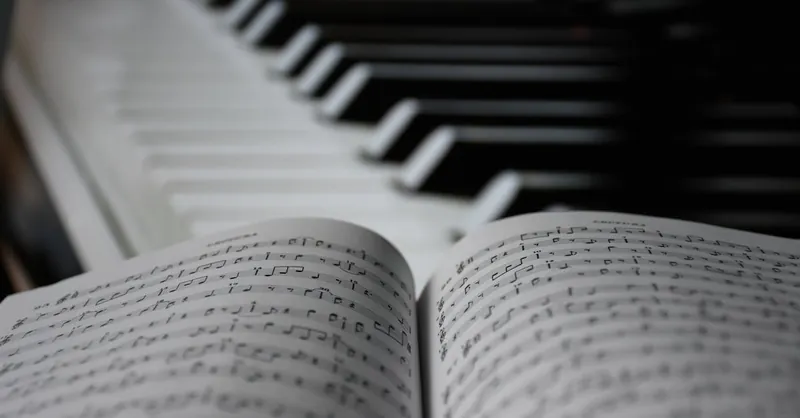
Image courtesy of Sebastian Rivera
How the Circle Represents Key Signatures
One of the most practical uses of the circle of fifths is its clear representation of key signatures in both major and minor keys. Each position on the circle corresponds to a specific key, showing exactly how many sharps or flats that key contains. Starting at the top with C major—noted for having no sharps or flats—moving clockwise around the circle adds sharps in a precise order: F♯, C♯, G♯, D♯, A♯, E♯, and B♯. For example, G major, the next key clockwise, has one sharp (F♯), D major has two sharps (F♯ and C♯), and this pattern continues adding sharps with each step. This systematic arrangement helps guitar and piano players instantly identify a key’s signature without memorizing each one individually.
Conversely, moving counterclockwise around the circle adds flats in the exact order: B♭, E♭, A♭, D♭, G♭, C♭, and F♭. For example, F major, just one step counterclockwise from C, has one flat (B♭), followed by B♭ major with two flats (B♭ and E♭), and so on. The circle doesn’t stop at major keys; the inner ring represents their relative minor keys, which share the same key signature but start on a different tonic note. For instance, A minor is the relative minor of C major, meaning it also has no sharps or flats, while E minor relates to G major with one sharp. This dual layout allows easy navigation between major and minor keys, making the circle of fifths an essential tool for understanding how keys relate and how sharps and flats are ordered across all scales—critical knowledge when learning chord progressions, transposing songs, or jazz improvisation on guitar and piano.
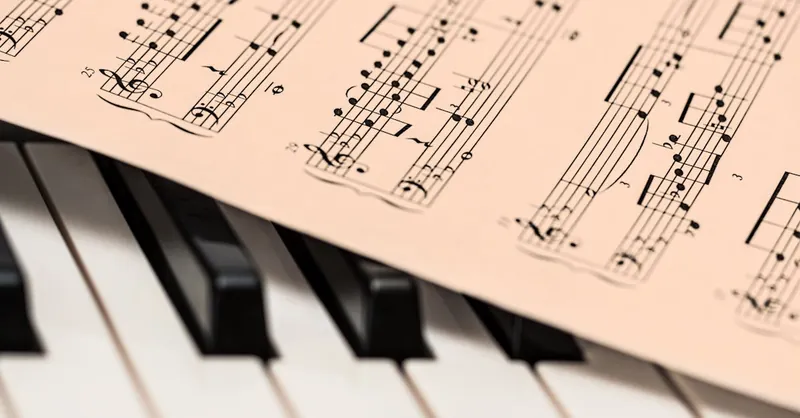
Image courtesy of Pixabay
Understanding Fifths and Fourths – The Interval Relationship and Why the Circle Moves in Fifths
At the heart of the circle of fifths is the interval called a perfect fifth, a foundational building block in Western music theory. A perfect fifth spans seven semitones—on a piano, that means moving seven keys up from one note to another; on a guitar, it’s typically moving to the fifth fret on the next string. This interval is both harmonically pleasing and incredibly stable, which is why it forms the basis for the circle’s structure.
The circle moves clockwise by perfect fifths because each subsequent key is exactly seven semitones higher than the previous one. For example: 1. Starting at C, moving up a perfect fifth lands you on G. 2. From G, another perfect fifth up takes you to D. 3. This pattern continues, creating the sequence: C → G → D → A → E → B → F♯ (or G♭), and so on.
Conversely, moving counterclockwise on the circle moves by perfect fourths, which are intervals five semitones apart—the inverse of perfect fifths. This direction adds flats to key signatures. In practice: - Moving up a perfect fourth from C takes you to F - From F, a perfect fourth leads to B♭ - Then E♭, A♭, and so forth.
This dual movement reflects how music naturally progresses between closely related keys by either fifths or fourths, making transitions sound smooth and intuitive. For guitarists, this explains common chord changes, such as moving from G to C (a perfect fourth down) or C to G (a perfect fifth up). Pianists benefit similarly, as the circle clarifies scale construction and modulation paths.
Understanding the intervallic relationship of fifths and fourths not only demystifies why the circle is organized as it is but also empowers musicians to: - Predict key signatures when changing keys - Build chord progressions that flow naturally - Improvise seamlessly through scales related by fifths and fourths
By internalizing this interval structure, guitar and piano players develop a deeper connection to the musical patterns that govern composition, harmony, and melodic development.
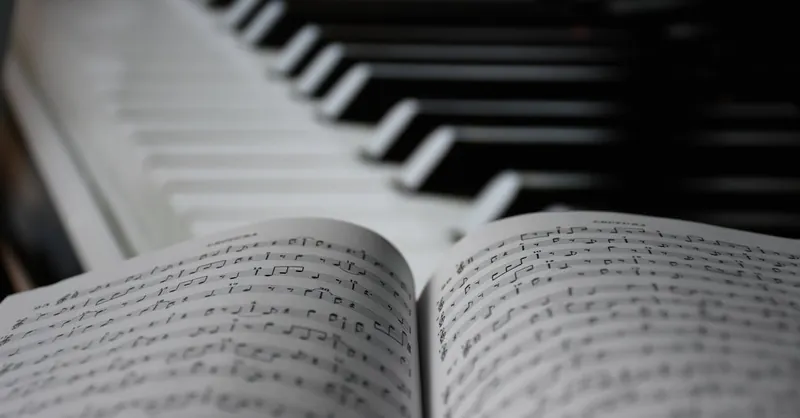
Image courtesy of Sebastian Rivera
Using the Circle for Guitar: Fingerboard Patterns and Chord Shapes
For guitarists, the circle of fifths isn’t just a theoretical tool—it’s a practical guide to mastering chord shapes, fingerboard patterns, and common chord progressions that form the backbone of countless songs. Understanding how the circle maps onto your guitar neck can accelerate your ability to navigate keys, transpose songs, and build smooth transitions between chords.
Applying the Circle to Guitar Fingerboard
On the guitar, each position on the circle corresponds to a root note that you can find along the fretboard in multiple places. Because the guitar is tuned in fourths (E-A-D-G-B-E), moving up a perfect fifth on the same string roughly equals moving up seven frets, but you can also find the same note in different positions and strings. The circle helps you recognize these roots and related chords quickly by showing how closely related keys share common tones and fingerings.
For example, if you’re playing in the key of C major, the chords G major, F major, and A minor (found adjacent on the circle) will have shapes and scales that fit naturally within that key area on the guitar neck. This insight guides your fingering choices and helps avoid awkward jumps.
Common Chord Progressions Guided by the Circle of Fifths
Many classic chord progressions used in rock, pop, blues, and jazz emerge directly from relationships depicted in the circle. Here are a few practical examples every guitarist should know:
- I-IV-V Progression – The most fundamental progression in Western music, it moves between the root (I), the subdominant (IV), and the dominant (V) chords. For instance, in the key of C, these are C (I), F (IV), and G (V). The circle places these chords near each other, showing their close harmonic relationship.
- Circle Progression – A sequence of chords moving by descending fifths (or ascending fourths), such as Am → Dm → G → C, which is common in jazz and creates natural tension and resolution.
- Secondary Dominants – Using chords that temporarily tonicize chords other than the I, often found by moving clockwise around the circle from the target chord to its V chord.
By visualizing these progressions on the circle, guitarists can more easily experiment with substitutions, add passing chords, or modulate to related keys, enriching their playing and songwriting. This practical application of the circle turns it from a theoretical diagram into a dynamic map for navigating your guitar fingerboard with confidence and creativity.
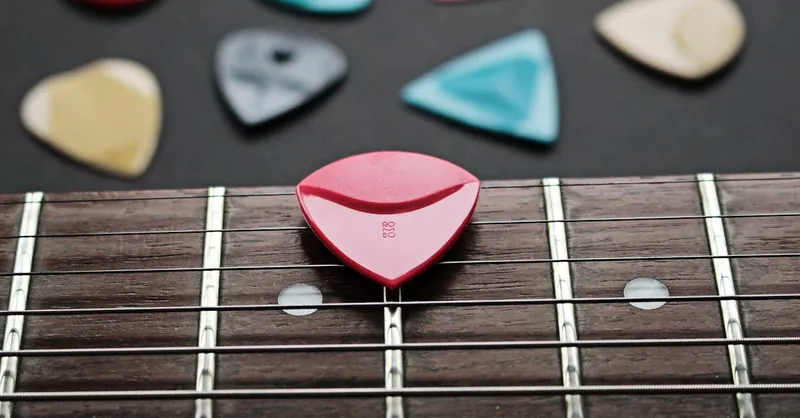
Image courtesy of ROMBO
Using the Circle for Piano: Scales and Chord Building
For pianists, the circle of fifths is an invaluable resource not only for understanding key signatures but also for efficiently building scales and harmonizing melodies. By referencing the circle, you can quickly identify which notes belong to any major or minor scale, making scale practice more focused and less overwhelming. Since each step around the circle adds or removes a sharp or flat, it provides a clear visual method to construct scales without memorizing each key individually.
Building Scales with the Circle
When you look at a particular key on the circle, the number of sharps or flats listed corresponds directly to the accidentals included in that scale. For example, the key of E major (four steps clockwise from C) has four sharps: F♯, C♯, G♯, and D♯. Using the circle, you can:
- Identify the scale’s notes by including all natural notes and adding those sharps or flats indicated by the key position.
- Understand the relative minor scale by moving three semitones down the scale (or using the inner circle), which shares the same key signature but starts on a different tonic.
- Practice scales in relation to one another by moving sequentially around the circle, enhancing fluidity in transitioning between keys.
Harmonizing Melodies and Building Chords
Pianists can also use the circle to build chords that fit any key by selecting notes from the scale defined at that circle position. The circle shows chord families closely related to each tonic, helping you harmonize melodies effectively. For example, in the key of D major (two sharps), the primary chords you would build are:
- I (Tonic): D major
- IV (Subdominant): G major
- V (Dominant): A major
Each of these chords corresponds to nearby positions on the circle, promoting smooth, natural-sounding progressions when accompanying or composing music. Additionally, the circle helps pianists incorporate secondary dominants, modal interchange, and modulations by visualizing related keys and their shared chords.
By integrating the circle of fifths into your piano practice, you can achieve a stronger grasp on scale construction, chord building, and harmonic relationships—essential skills for improvisation, songwriting, and expressive playing. Using this tool regularly enhances your ability to harmonize melodies with confidence and to explore new keys fluently.
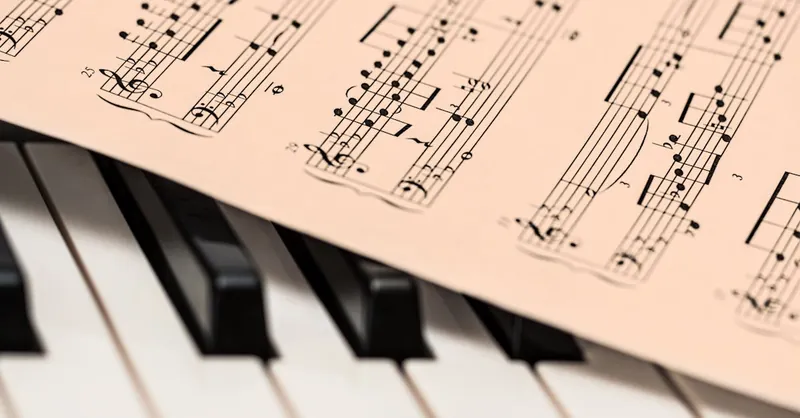
Image courtesy of Pixabay
Related Minor Keys and the Concept of Relative Minors
An essential feature of the circle of fifths is its inclusion of minor keys, which are represented on the inner circle directly corresponding to each major key on the outer ring. These are known as relative minors, and they share the exact same key signature as their major counterparts but begin on a different root note. For example, A minor is the relative minor of C major—both have no sharps or flats in their key signatures, yet A minor centers around the note A as its tonic.
Understanding relative minor keys is crucial for both guitarists and pianists because it opens up new tonal possibilities without altering the accidentals you’re already familiar with. Here’s how the concept works practically:
- Locate the Major Key on the outer circle (e.g., C major).
- Find the Corresponding Relative Minor on the inner circle (e.g., A minor for C major).
- Use the Same Notes and Chords but emphasize the minor tonic to create different emotional effects, such as melancholy or tension.
This relationship expands your ability to compose and improvise by smoothly switching between major and minor moods within the same key signature. It also helps when learning scale patterns and chord shapes on guitar and piano, as the fingering remains consistent but the tonal center changes.
By mastering relative minor keys within the circle of fifths, you gain a deeper insight into the interconnectedness of musical keys. This knowledge not only simplifies memorization of scales and chords but also enriches your expression, allowing subtle shifts in mood while staying within a familiar key signature — a versatile skill for songwriting and advanced playing alike.
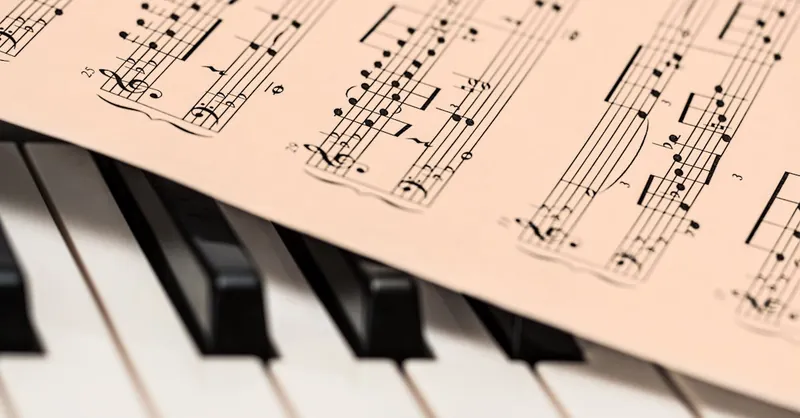
Image courtesy of Pixabay
Common Chord Progressions Derived from the Circle of Fifths
Understanding the circle of fifths is invaluable for mastering common chord progressions that form the foundation of many songs across genres. By analyzing popular progressions like I-IV-V and ii-V-I, guitarists and pianists can gain practical insight into how chords relate to each other within a key and how these sequences create harmonic movement and musical tension.
The I-IV-V Progression: The Backbone of Western Music
The I-IV-V progression is the most fundamental and widely used chord progression in Western music, especially in rock, pop, blues, and country. It consists of three primary chords built on the: 1. I (Tonic) — the home chord, establishing the key. 2. IV (Subdominant) — creating movement away from the tonic. 3. V (Dominant) — generating tension that resolves back to the tonic.
For example, in the key of C major, the I-IV-V chords are C major (I), F major (IV), and G major (V). If you look at the circle of fifths, these chords appear near each other, illustrating their close relationships. This proximity on the circle explains why these chords fit naturally together and sound harmonically pleasing.
Guitar example:
- Play the open chords C, F, and G using standard shapes.
- Transitioning among these chords is smooth because their root notes are adjacent or closely related on the fretboard.
Piano example:
- Use the right hand to play C major, F major, and G major triads.
- The shared notes and stepwise movement between these chords help in creating natural-sounding progressions.
The ii-V-I Progression: Essential Jazz and Pop Harmony
The ii-V-I progression is a cornerstone in jazz and many pop styles, emphasizing smooth harmonic resolution and sophisticated tension-release mechanisms. It moves from: 1. ii (Supertonic minor) — a minor chord that prepares the dominant. 2. V (Dominant) — creating tension. 3. I (Tonic) — resolving the tension in a satisfying way.
In C major, this progression is D minor (ii) → G major (V) → C major (I). On the circle of fifths, these chords form a mini-cycle moving counterclockwise—D minor (ii) leads naturally to G (V), which then resolves back to C (I), creating a powerful sense of movement and closure.
Guitar example:
- Practice the chord shapes for Dm, G, and C in their open or barre chord forms.
- Notice how the finger movements correspond to the circle’s structure, allowing fluid transitions.
Piano example:
- Play the triads or seventh chords Dm7 → G7 → Cmaj7 to enrich the sound.
- This progression forms the basis for countless improvised solos and comping patterns.
Exploring Extended Circle Progressions
Beyond these basics, the circle of fifths also guides extended progressions that cycle through several chords by moving in fifths, such as:
- Am – Dm – G – C: A descending fifths progression common in jazz and pop, showcasing smooth voice leading.
- Secondary Dominants: Temporary dominant chords that lead to chords other than the tonic, found by moving clockwise around the circle to the V of any chord (e.g., in C major, D7 as V of V leading to G).
By using the circle of fifths as a visual roadmap, both guitarists and pianists can compose, improvise, and understand these progressions deeply, unlocking new creative possibilities and enhancing performance skills across styles.
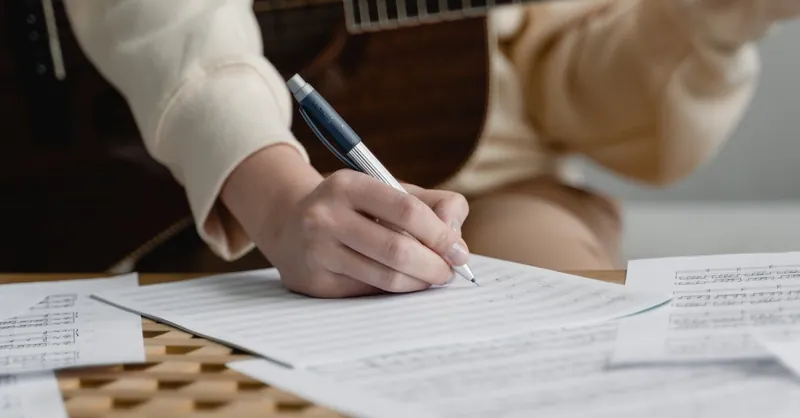
Image courtesy of Tima Miroshnichenko
Modulation and Key Changes Made Simple – How the Circle Helps in Smoothly Changing Keys Within a Song
One of the most powerful practical uses of the circle of fifths is its ability to simplify modulation—the process of changing keys smoothly within a song. Whether you're playing guitar or piano, understanding how to navigate the circle makes transitioning between keys feel natural and seamless, rather than abrupt or jarring. This is especially valuable for songwriting, improvisation, and performing covers where key changes add emotional impact and variety.
Using Closely Related Keys for Smooth Modulation
The circle visually groups closely related keys—keys that differ by only one sharp or flat—right next to each other. Modulating to a key adjacent on the circle ensures that most notes and chords overlap, creating a smooth musical shift. For example, moving from C major to G major (one step clockwise) introduces only one new sharp, F♯, making it easier to transition without disrupting the flow.
Common Modulation Techniques with the Circle of Fifths
- Pivot Chord Modulation: Use a chord common to both the current key and the target key as a "pivot" to smoothly change tonal centers. The circle helps identify these shared chords by showing overlapping chord families in adjacent keys.
- Stepwise Movement Along the Circle: Modulate through a sequence of keys moving clockwise or counterclockwise around the circle, each step shifting one fifth or fourth. This gradual change preserves harmonic coherence.
- Direct Modulation Between Distant Keys: Even if jumping to a less related key, the circle reveals intermediate keys that act as bridges, allowing you to modulate step-by-step rather than abruptly.
For guitarists and pianists, using the circle during modulation means you can:
- Identify target keys that complement the current key.
- Find shared chords or tones that serve as smooth pivot points.
- Plan your fingering and scale patterns to facilitate the transition during performance.
Mastering modulation via the circle of fifths expands your musical expression and enriches your arrangements by incorporating dynamic key changes with confidence and clarity.

Image courtesy of Tima Miroshnichenko
Practical Exercises to Master the Circle of Fifths – Step-by-Step Drills for Guitar and Piano Players
To truly internalize the circle of fifths and translate its theory into your playing, consistent practice with targeted exercises is essential. Whether you’re a guitarist or pianist, these step-by-step drills focus on recognizing key signatures, navigating chord progressions, and improvising scales using the circle as your roadmap. Regularly incorporating these routines into your practice sessions will deepen your understanding and transform the circle of fifths into a reliable tool for composition and performance.
Guitar Exercises Using the Circle of Fifths
-
Root Note Identification Drill
Select a key on the circle and find all its root notes on the guitar neck across multiple strings and frets. For example, locate every G on the fretboard when practicing the key of G major. This helps you map notes visually and strengthens fretboard familiarity. -
Chord Progression Practice
Play basic I-IV-V progressions in different keys using open or barre chords. Gradually move around the circle clockwise for sharp keys, then counterclockwise for flat keys. This encourages muscle memory for common chord shapes associated with each key. -
Circle of Fifths Walk-Up/Down
Practice a sequence of chords that follow the circle in ascending fifths or descending fourths, such as Am → Dm → G → C or Em → Am → D → G. Strumming or picking these progressions reinforces the harmonic relationships the circle illustrates.
Piano Exercises Using the Circle of Fifths
-
Scale Practice Around the Circle
Begin with C major scale and move clockwise, practicing each major scale by adding sharps according to the circle. Then switch to the relative minor scales on the inner circle. This exercise improves finger dexterity and familiarity with key signatures. -
Chord Building and Inversions
Using the circle as a guide, build triads and seventh chords for I, IV, and V chords in multiple keys. Play these chords along with their inversions to develop smooth voice leading and hand coordination. -
Modulation and Pivot Chord Drill
Choose two adjacent keys on the circle and practice modulating between them using pivot chords common to both keys. This helps solidify your understanding of smooth key changes and enhances improvisation skills.
By regularly practicing these circle of fifths exercises, guitar and piano players can efficiently master key transitions, chord relationships, and scale fluency. This hands-on approach ensures the theoretical knowledge becomes a natural part of your instrumental technique, boosting creativity and confidence in all musical contexts.

Image courtesy of Tima Miroshnichenko
Tips and Tricks for Remembering the Circle of Fifths – Mnemonics, Visualization, and Creative Methods
Mastering the circle of fifths is much easier when you use effective memorization strategies and visualization techniques. Whether you're a guitarist or pianist, employing mnemonics, mental imagery, and other creative methods can help you internalize the circle quickly and make it a natural part of your music practice. Here are some proven tips to lock the circle firmly in your memory and use it effortlessly during playing and songwriting.
Mnemonic Devices for Sharps and Flats
Mnemonic phrases turn abstract musical information into memorable sentences, making it simpler to recall the order of sharps and flats on the circle. Two classic examples are:
-
Order of Sharps (clockwise movement):
F C G D A E B
Mnemonic: Father Charles Goes Down And Ends Battle
This helps you remember the order that sharps are added as you move clockwise on the circle. -
Order of Flats (counterclockwise movement):
B E A D G C F
Mnemonic: Battle Ends And Down Goes Charles’ Father
Use this phrase to recall the order of flats as you circle counterclockwise.
Linking these phrases to the circle’s direction reinforces your understanding of how key signatures build up with sharps and flats.
Visualization and Creative Mapping
Visual learners benefit from imagining the circle as a clock or a color wheel, where each key has a "color" or physical position corresponding to its sharps or flats. Here are some visualization ideas:
- Color-Coding Keys: Assign distinct colors to sharps and flats keys and visualize shifting hues as you move around the circle, helping your brain anchor key relationships through color association.
- Clock Face Positioning: Visualize C major at 12 o’clock, then mentally "turn the dial" clockwise to sharp keys or counterclockwise to flat keys as if setting a timer; this kinesthetic image helps solidify key order.
- Relating to Instrument Shapes: Connect circle positions with familiar chord shapes on your guitar or piano. For example, associate G major’s location on the circle with the open G chord shape on guitar, or the G major triad hand position on piano.
Using Songs and Patterns for Reinforcement
Another creative approach is to associate circle positions with popular chord progressions or songs you enjoy, turning abstract theory into concrete musical examples:
- Practice I-IV-V progressions in keys around the circle to physically feel chord movement.
- Memorize simple songs that feature key signature changes aligned with the circle’s progression, reinforcing transitions visually and aurally.
- Improvise scales and chord changes following the circle’s sequence during practice sessions to internalize the sound and flow of fifth relationships.
By combining mnemonics, vivid mental imagery, and practical instrumental applications, you embed the circle of fifths deep into your musical intuition. These tips transform what once felt like a complex theoretical map into a familiar, hands-on tool that accelerates learning and enriches creativity on both guitar and piano.
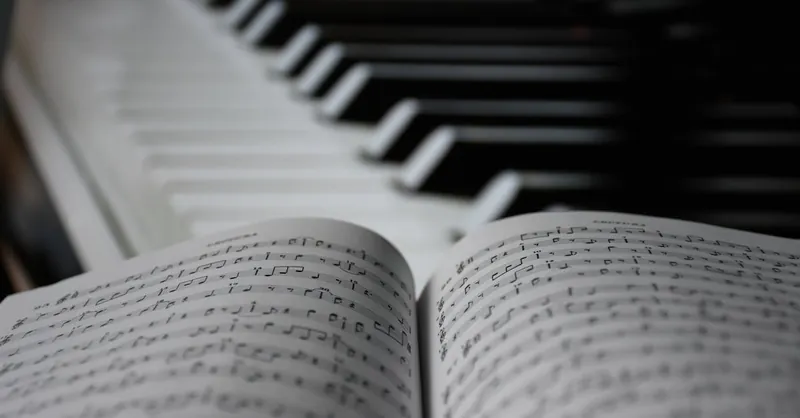
Image courtesy of Sebastian Rivera
